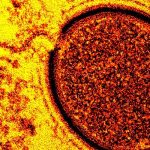 A comprehensive review of identifying and handling biohazardous waste. The course focuses on types of biological waste and associated risks; biological waste management; treatment and disposal methods; typical chemicals, disinfectants and sterilants; as well as validation and efficacy monitoring.
A comprehensive review of identifying and handling biohazardous waste. The course focuses on types of biological waste and associated risks; biological waste management; treatment and disposal methods; typical chemicals, disinfectants and sterilants; as well as validation and efficacy monitoring.
This course is based on the content outlined in the International Federation of Biosafety Associations (IFBA) certification exam guidelines for Biohazardous Waste Management and can be used as a study aid.
Course Learning Objectives
• Differentiating the various types of biohazardous waste.
• Best practices for the procedures for managing biowaste.
• Risks and devise plans to manage the handling, treatment, and disposal of biological waste.
• The various categories of chemical disinfectants and sterilants for use with biohazardous waste, specifically the advantages and disadvantages of each type.
• Procedures for the validation and efficacy monitoring of biological waste treatment.
Chapter 1
A. Defining the various terms used within the practice and regulation of biological waste management.
B. The fundamental principles of disinfection, decontamination, incineration, and sterilization in relation to biowaste management.
C. Assessing the risks and evaluate the hazards associated with processing biowaste.
D. The relative resistance to heat and chemical decontamination of different classes of microorganisms found in biowaste.
E. Identifying the different types of biological waste including: biological laboratory waste, sharps, anatomical waste, blood and body fluids, and animal waste.
F. Identifying the different types of mixed biological waste such as mixed biological/chemical waste and mixed biological/radioactive waste.
Chapter 2
A. The basic elements of a comprehensive biohazardous waste management system.
B. The necessary packaging, treatment, storage, and transportation required for different types of biohazardous waste.
C. Advantages and disadvantages of on- vs. off-site biohazardous waste treatment and disposal.
D. The safety measures (for example, personal hygiene, personal protective equipment) and security measures (for example, physical security, and restricted access) needed to manage untreated biological wastes.
Chapter 3
A. Identifying the laboratory personnel responsible, including their roles and tasks, for an institution’s biowaste management program.
B. The cost factors affecting biowaste disposal.
C. Emergency response procedures.
D. Various strategies to reduce biohazardous waste.
E. Training programs for all personnel in the proper handling and risks associated with biological waste.
Chapter 4
A. The basic principles, advantages, and limitations of the various treatment and disposal options for biowaste.
B. How to evaluate and select proper treatment and disposal options for animal carcasses and anatomical waste.
Chapter 5
A. The germicidal properties, advantages, and limitations of commonly used classes of chemical disinfectants and sterilants including: chlorine-based products, iodine and iodophors, alcohols, phenolic compounds, quaternary ammonium compounds, glutaraldehyde, formaldehyde, hydrogen peroxide and peracids.
B. The factors (for example, concentration, contact time, organic load, temperature, humidity, diluent, pH, stability) that affect the efficacy of common classes of disinfectants.
C. Intrinsic and inherent resistance of different classes of microorganisms to chemical disinfectants.
D. Appropriate disinfectant for use against different classes of microorganisms in diverse settings.
Chapter 6
A. The biological validation and efficacy monitoring methods applicable to different types of biological waste treatment options.
B. The procedures for maintaining proper documentation and record keeping for validation and efficacy monitoring.


